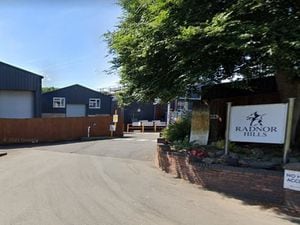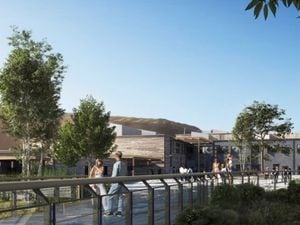Water business to harness solar power
A flourishing business will be able to harness energy from the sun to power its water bottling plant.

Last year, Radnor Hills Ltd lodged plans with Powys County Council to build a ground mounted solar array that can produce 1,200 kilowatt-hours (kWh) of energy a year at their factory at Heartease Farm near Knighton.
The solar array would be arranged in rows of 180 metres in length covering an area of 1.2 hectares.
The panels would be fixed on metal frames attached to the ground by 1.2 metre pile foundations and at its highest point would be 2.2 metres above ground level.
The frames will point southwards would be approximately 2.2 metres above ground level at the highest point.
Planning agent Richard Corbett of Roger Parry and Partners Ltd explained the proposal in a design and access statement.
Mr Corbett said: “Radnor Hills is a family run business and is one of the UK’s best known mineral water brands and has won many prestigious contracts.
“Radnor Hills mineral water started as a diversification from the family farming business.
“The company provide much needed rural employment and now employs 180 people, the enterprise has nine production lines bottling a vast range of soft drinks into glass and plastic bottles, tetra cartons and cans.”
Mr Corbett said that Radnor Hill is still a working farm.
Mr Corbett said: “The solar array will produce renewable energy which will be used to reduce the business electricity requirement and export surplus to the national grid.”
He added that the solar energy scheme would “future proof” the business against electricity price hikes.
Knighton town council had supported the application.
Planning officer Richard Edwards said: “The development would contribute to renewable energy generation targets set by the UK and Welsh Governments.
“The economic benefits relate to the reduction on reliance on expensive predominantly fossil fuel derived imported electricity, job creation, increased security and reliability of supply.
“Given the scale and nature of the proposals, it is noted they would be low-lying within the wider landscape, and would thus cause a limited landscape visual impact in this instance.
“The application site also benefits from mature boundaries formed of hedgerows and trees, which provide effective levels of screening, and would thus further limit views of the proposed development within the landscape.”
Due to this, Mr Edwards approved the application.
A sustainable drainage system (Suds) application will need to be approved before building work can begin.





